Abstract
Two experiments investigated autoshaping in rats to localizable visual and auditory conditioned stimuli predicting response-independent food. In Experiment 1 considerable conditioned-stimulus approach behavior was generated by a localizable visual conditioned stimulus that was situated approximately 35 cm from the food tray. Using the same apparatus in Experiment 2 we found that the conditioned-stimulus approach was generated only to a visual conditioned stimulus and not to a localizable auditory conditioned stimulus even though subjects (1) could discriminate presentations of the auditory conditioned stimulus, (2) had associated it with food, (3) could localize it, and (4) would approach the auditory stimulus if this behavior constituted an instrumental response to food. The predominant conditioned responses to the auditory stimuli were goal tracking (entering the food tray) and orienting towards the food-paired conditioned stimulus by head turning and rearing and turning. These results imply that rats do not invariably approach a localizable appetitive Pavlovian conditioned stimulus but that stimulus-approach responses depend on the nature and modality of the conditioned stimulus.
Keywords: autoshaping, visual conditioned stimulus, auditory conditioned stimulus, sign tracking, rats
Full text
PDF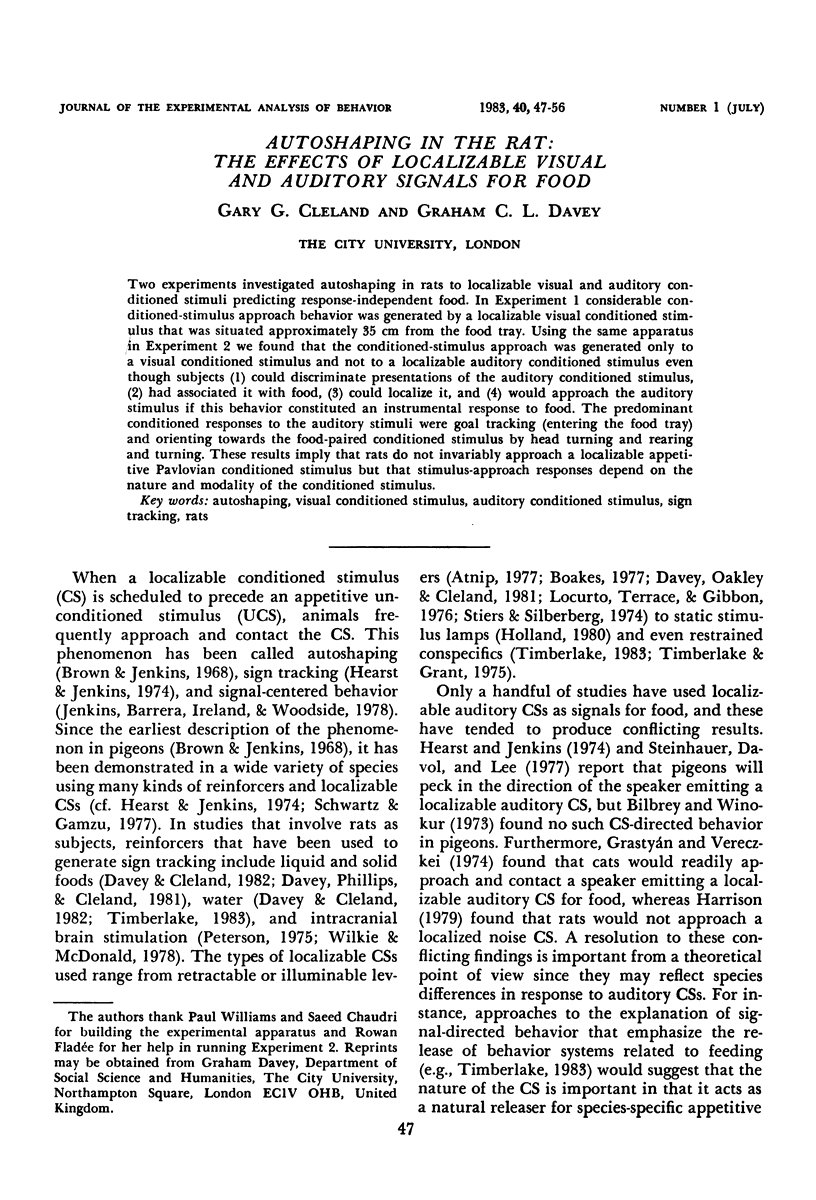
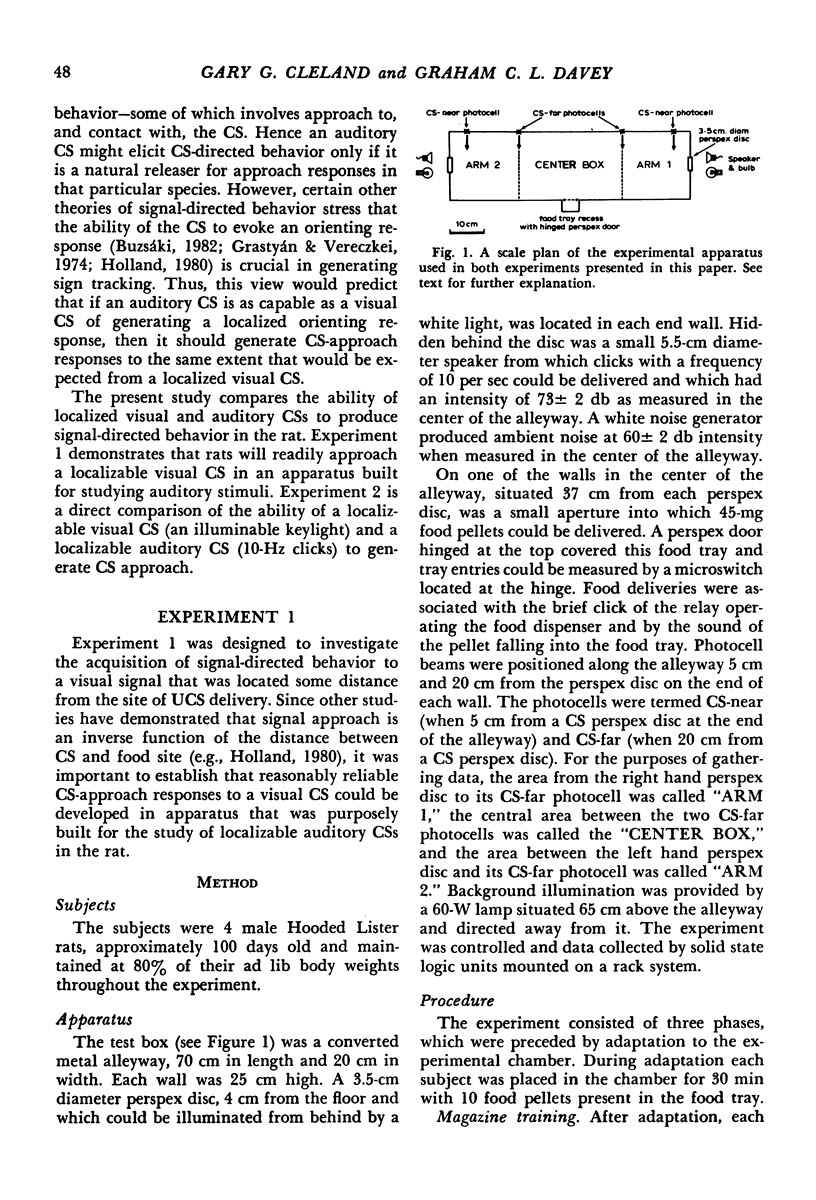
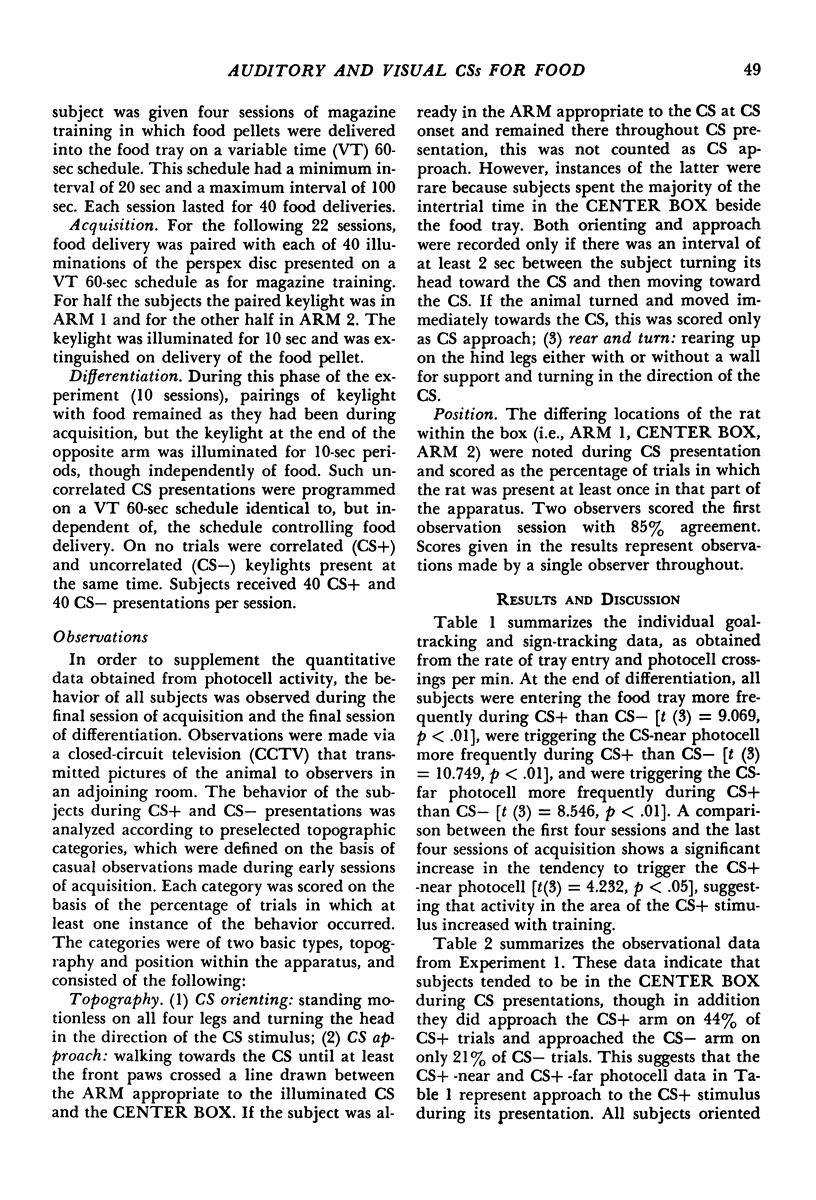
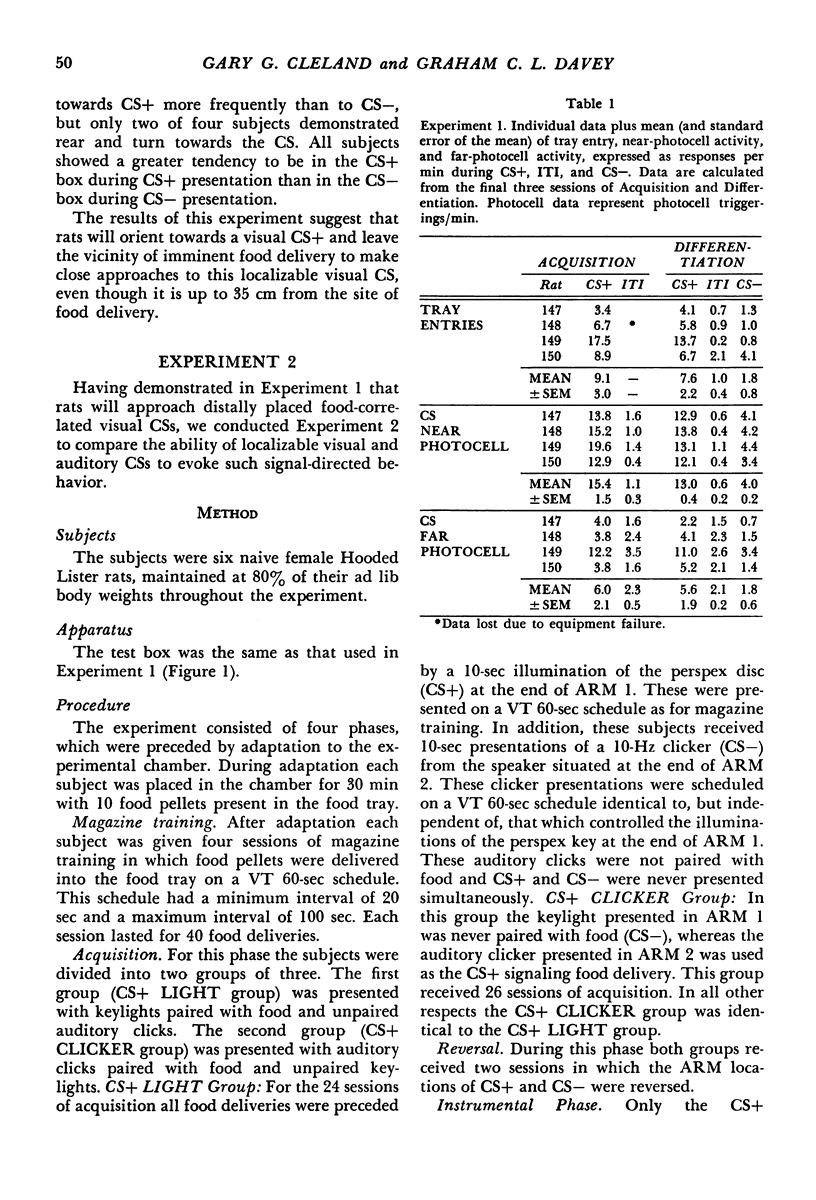
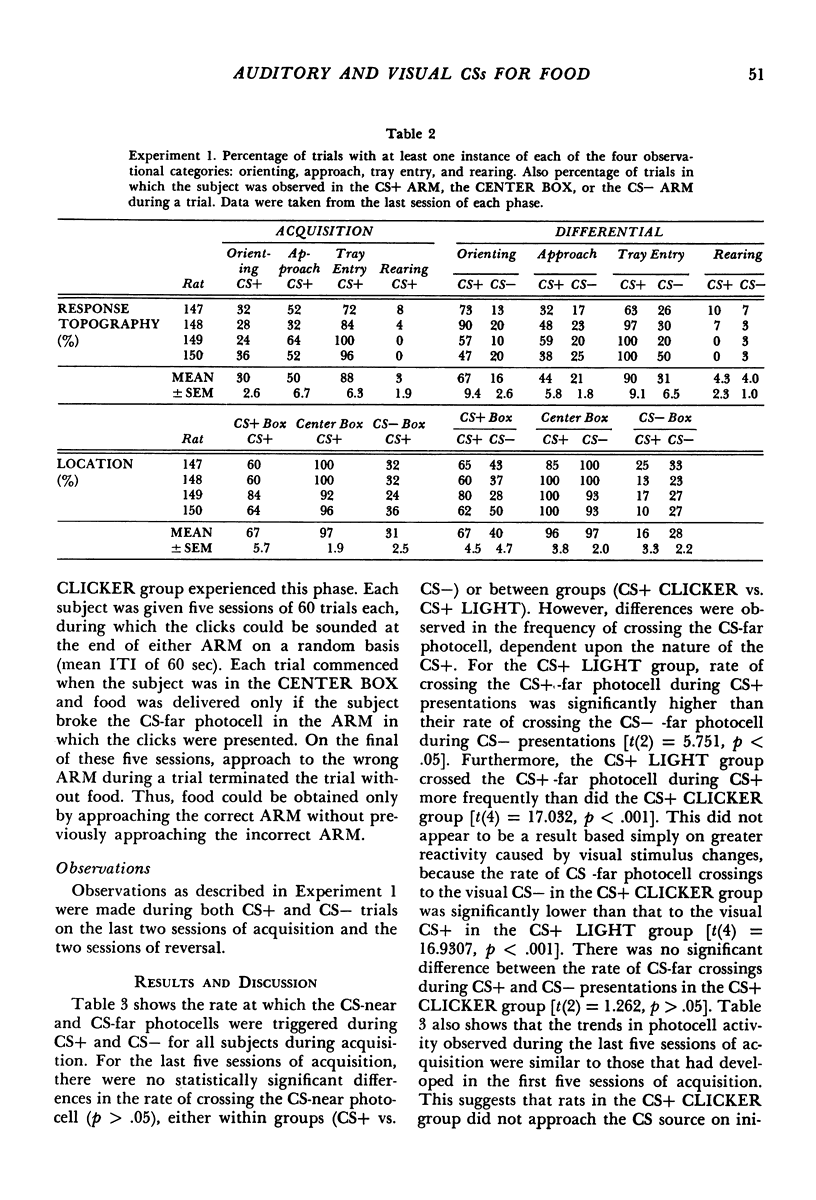
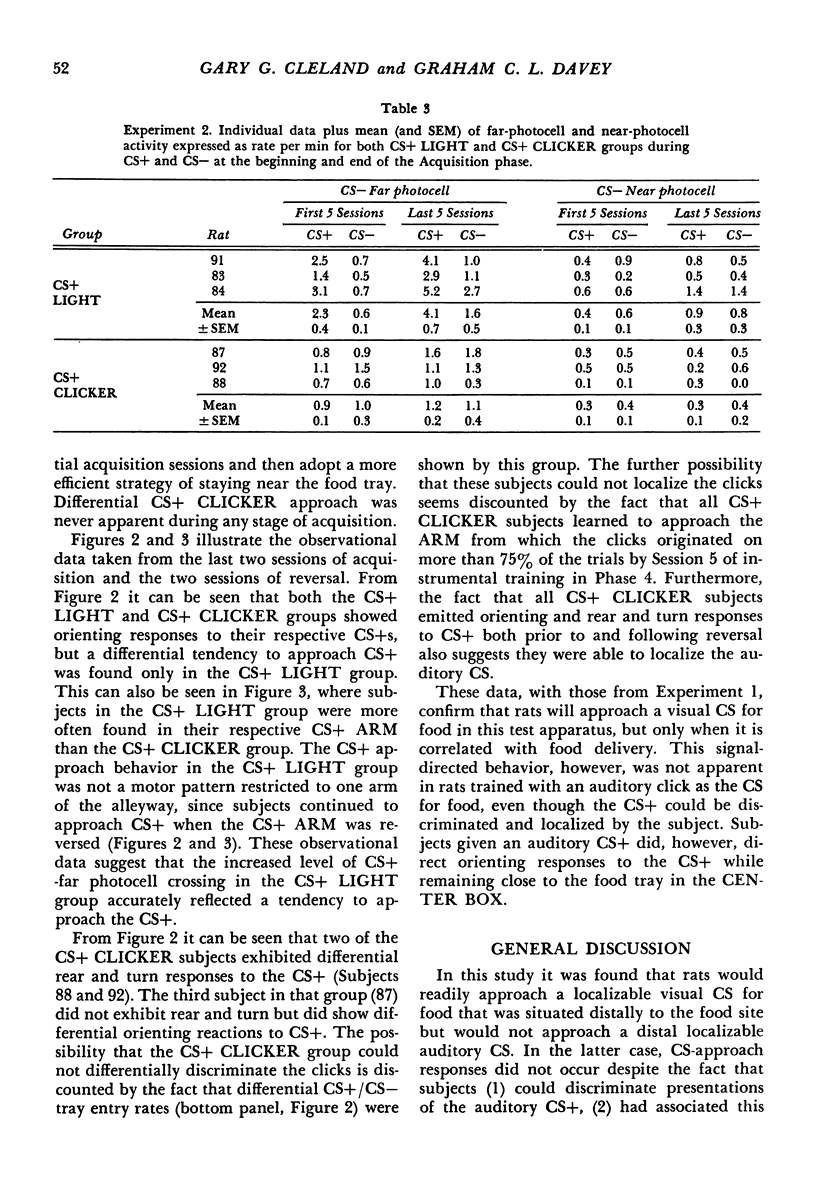
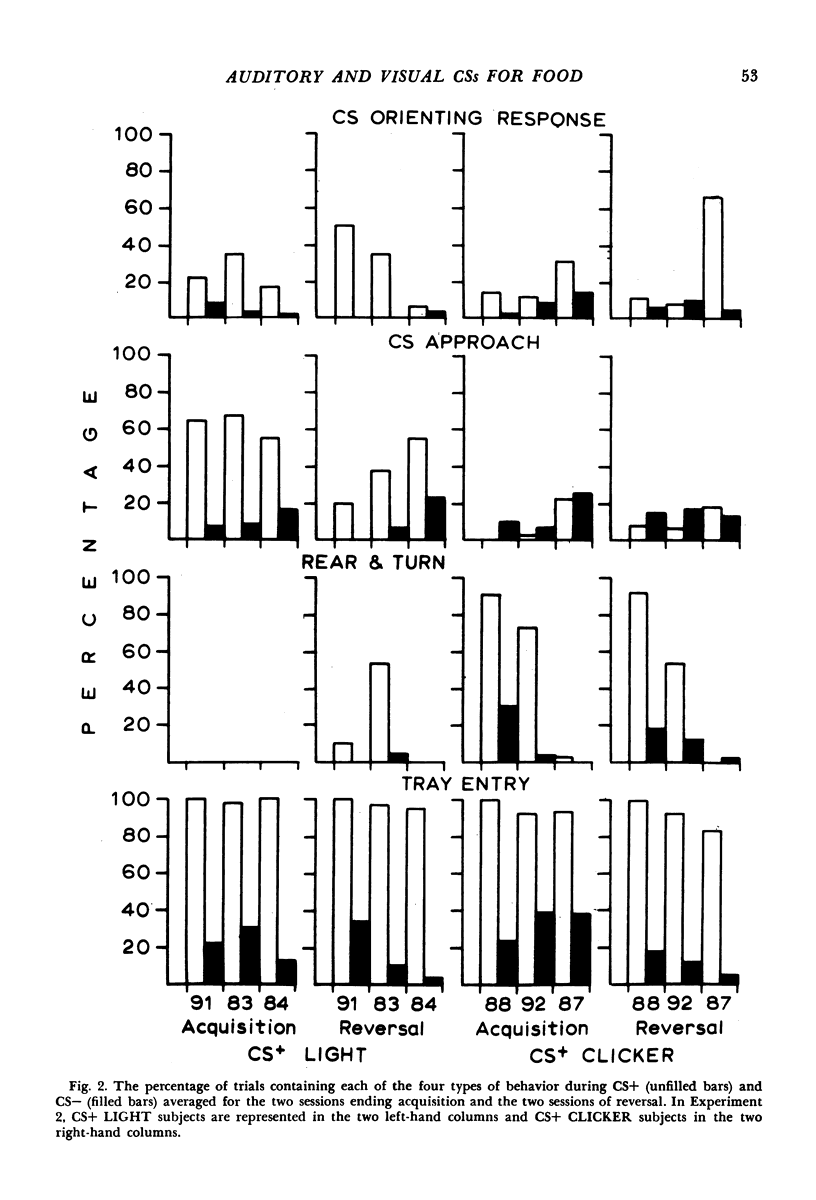
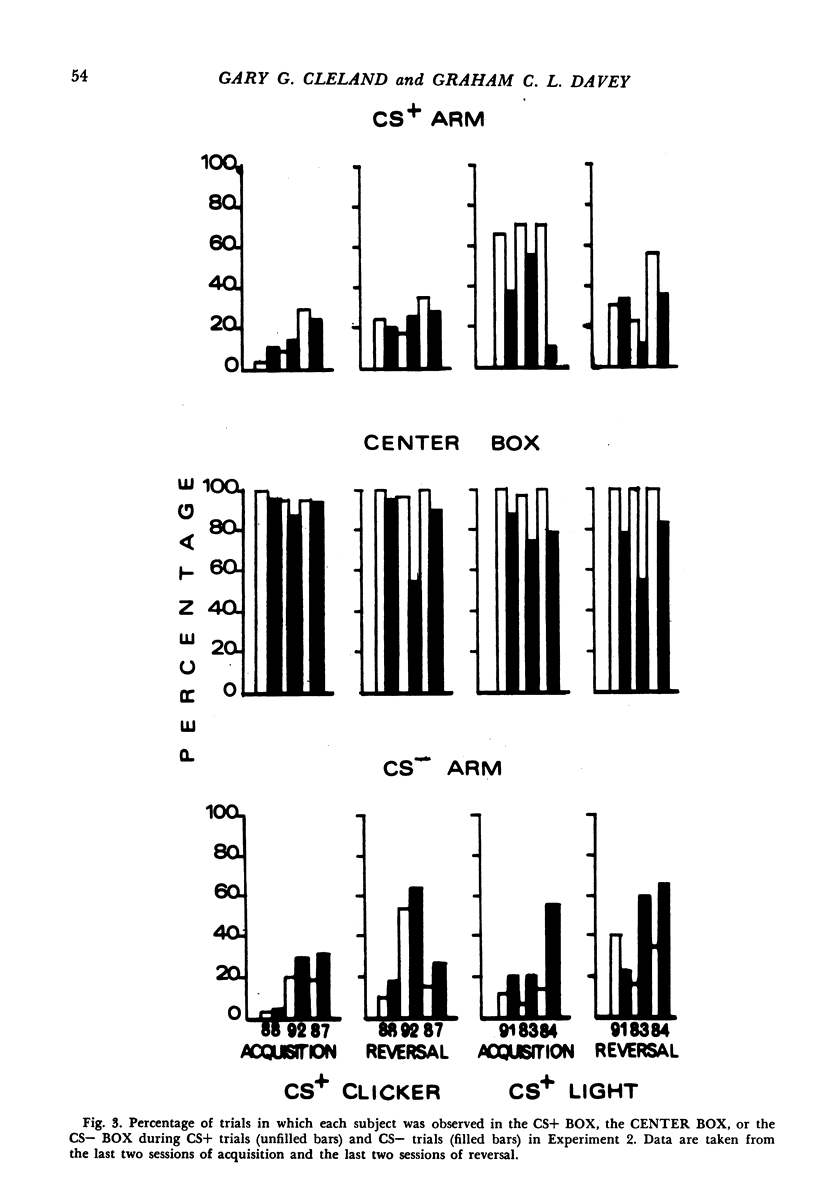
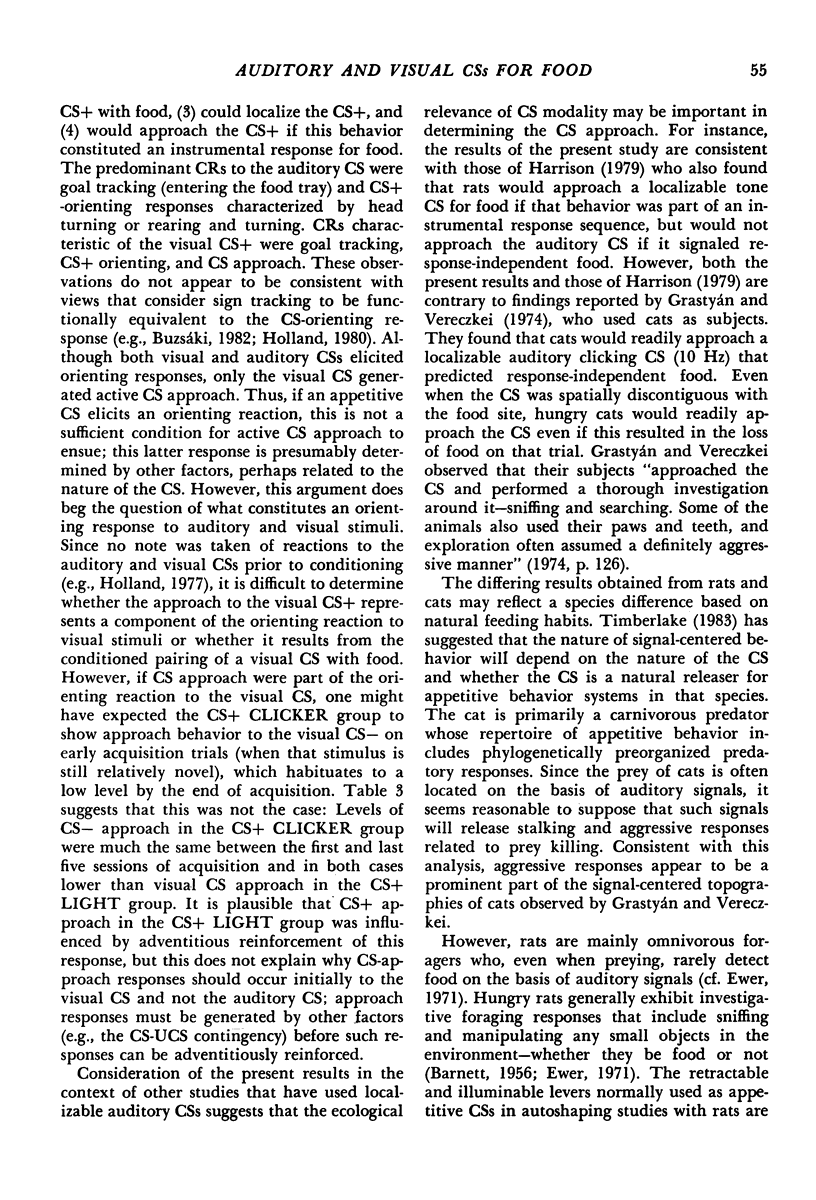
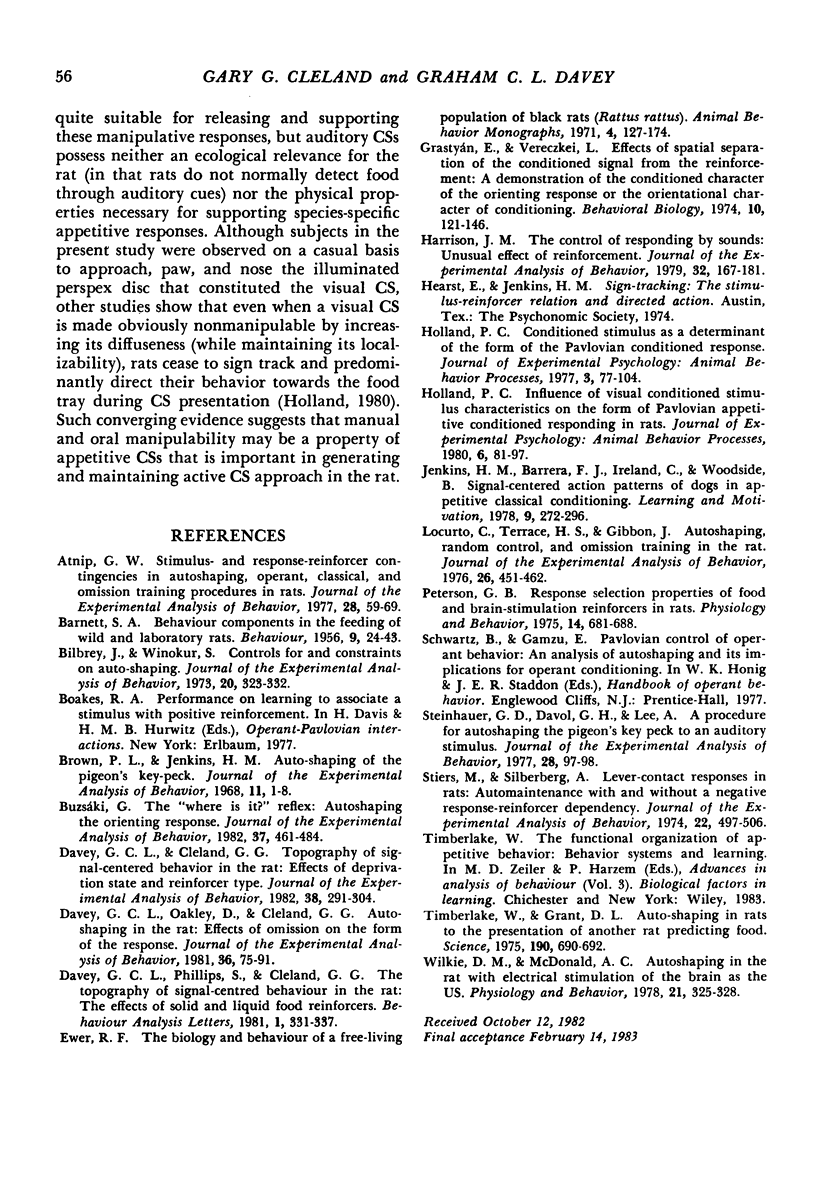
Selected References
These references are in PubMed. This may not be the complete list of references from this article.
- Atnip G. W. Stimulus- and response-reinforcer contingencies in autoshaping, operant, classical, and omission training procedures in rats. J Exp Anal Behav. 1977 Jul;28(1):59–69. doi: 10.1901/jeab.1977.28-59. [DOI] [PMC free article] [PubMed] [Google Scholar]
- Bilbrey J., Winokur S. Controls for and constraints on auto-shaping. J Exp Anal Behav. 1973 Nov;20(3):323–332. doi: 10.1901/jeab.1973.20-323. [DOI] [PMC free article] [PubMed] [Google Scholar]
- Brown P. L., Jenkins H. M. Auto-shaping of the pigeon's key-peck. J Exp Anal Behav. 1968 Jan;11(1):1–8. doi: 10.1901/jeab.1968.11-1. [DOI] [PMC free article] [PubMed] [Google Scholar]
- Buzsáki G. The "where is it?" reflex: autoshaping the orienting response. J Exp Anal Behav. 1982 May;37(3):461–484. doi: 10.1901/jeab.1982.37-461. [DOI] [PMC free article] [PubMed] [Google Scholar]
- Davey G. C., Cleland G. G. Topography of signal-centered behavior in the rat: Effects of deprivation state and reinforcer type. J Exp Anal Behav. 1982 Nov;38(3):291–304. doi: 10.1901/jeab.1982.38-291. [DOI] [PMC free article] [PubMed] [Google Scholar]
- Davey G. C., Oakley D., Cleland G. G. Autoshaping in the rat: Effects of omission on the form of the response. J Exp Anal Behav. 1981 Jul;36(1):75–91. doi: 10.1901/jeab.1981.36-75. [DOI] [PMC free article] [PubMed] [Google Scholar]
- Grastyán E., Vereczkei L. Effects of spatial separation of the conditioned signal from the reinforcement: a demonstration of the conditioned character of the orienting response or the orientational character of conditioning. Behav Biol. 1974 Feb;10(2):121–146. doi: 10.1016/s0091-6773(74)91725-8. [DOI] [PubMed] [Google Scholar]
- Harrison J. M. The control of responding by sounds: unusual effect of reinforcement. J Exp Anal Behav. 1979 Sep;32(2):167–181. doi: 10.1901/jeab.1979.32-167. [DOI] [PMC free article] [PubMed] [Google Scholar]
- Holland P. C. Conditioned stimulus as a determinant of the form of the Pavlovian conditioned response. J Exp Psychol Anim Behav Process. 1977 Jan;3(1):77–104. doi: 10.1037//0097-7403.3.1.77. [DOI] [PubMed] [Google Scholar]
- Holland P. C. Influence of visual conditioned stimulus characteristics on the form of Pavlovian appetitive conditioned responding in rats. J Exp Psychol Anim Behav Process. 1980 Jan;6(1):81–97. [PubMed] [Google Scholar]
- Locurto C., Terrace H. S., Gibbon J. Autoshaping, random control, and omission training in the rat. J Exp Anal Behav. 1976 Nov;26(3):451–462. doi: 10.1901/jeab.1976.26-451. [DOI] [PMC free article] [PubMed] [Google Scholar]
- Peterson G. B. Response selection properties of food and brain-stimulation reinforcers in rats. Physiol Behav. 1975 Jun;14(6):681–688. doi: 10.1016/0031-9384(75)90058-x. [DOI] [PubMed] [Google Scholar]
- Steinhauer G. D., Davol G. H., Lee A. A procedure for autoshaping the pigeon's key peck to an auditory stimulus. J Exp Anal Behav. 1977 Jul;28(1):97–98. doi: 10.1901/jeab.1977.28-97. [DOI] [PMC free article] [PubMed] [Google Scholar]
- Stiers M., Silberberg A. Lever-contact responses in rats: automaintenance with and without a negative response-reinforcer dependency. J Exp Anal Behav. 1974 Nov;22(3):497–506. doi: 10.1901/jeab.1974.22-497. [DOI] [PMC free article] [PubMed] [Google Scholar]
- Wilkie D. M., McDonald A. C. Autoshaping in the rat with electrical stimulation of the brain as the US. Physiol Behav. 1978 Sep;21(3):325–328. doi: 10.1016/0031-9384(78)90089-6. [DOI] [PubMed] [Google Scholar]


